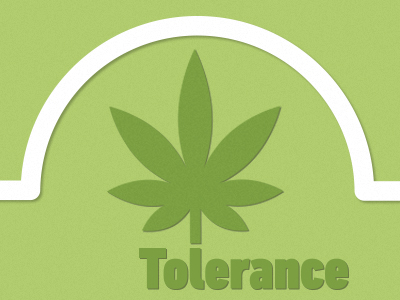Every cannabis user’s experience is unique and typically depends on their cannabis tolerance levels. When we say “tolerance levels,” we’re talking about how sensitive or adaptive the individual is to marijuana. As we all react to medications differently, we’re all unique in how our endocannabinoid system responds to weed.
Now, the thing about cannabis tolerance is that it doesn’t always remain at one level. The more frequently you consume marijuana, the more you develop resistance to it. So, over time, users find that they can consume more cannabis to get the same effects they experienced when they first ingested it. Sometimes, they try to regulate their tolerance levels by scheduling marijuana tolerance breaks.
Cannabis tolerance is a broad topic. However, it needs to be well-understood to reduce the risk of abuse. For this reason, this article is dedicated to creating awareness on the subject. From what marijuana tolerance is exactly to its measurement and how it changes, you’ll learn everything you need to know in the following paragraphs.
What’s Marijuana Tolerance?
 Virtually every human has cannabinoid receptors in their brain. The term “cannabis tolerance” describes how these receptors adapt to continuous exposure to the cannabinoids found in cannabis, especially tetrahydrocannabinol (THC). This, to a large extent, depends on the user’s endocannabinoid system (ECS).
Virtually every human has cannabinoid receptors in their brain. The term “cannabis tolerance” describes how these receptors adapt to continuous exposure to the cannabinoids found in cannabis, especially tetrahydrocannabinol (THC). This, to a large extent, depends on the user’s endocannabinoid system (ECS).
ECS is an integral part of the body’s Central Nervous System (CNS). It comprises a complex network of chemical signals that help to regulate various biological, cognitive, and psychological functions. For example, the endocannabinoid system is known to influence how the brain responds to anxiety and stress.
When an individual ingests marijuana, the brain’s CB1 receptors become activated. The more they consume weed, the more activated the receptors become. However, with frequent cannabis consumption, these receptors become so used to the substance that they hardly respond to it anymore. This causes the user not to feel the desired effects with the same amount of marijuana consumed the first time and leads to tolerance.
To feel high, the user must continuously increase the amount of weed consumed, and the cycle continues. The more the individual consumes to experience the desired euphoria, the more their tolerance levels build up.
Can Cannabis Tolerance Be Measured?
While there’s no universal or fool-proof method of measuring tolerance levels, individuals can accurately know how sensitive their brains are to weed through self-observation and self-awareness. The rule is simple—pay close attention to your dosage and how cannabis makes you feel over some time. To measure dosage correctly and to get better results, users are better off opting for edibles and cannabis tinctures than vaping, smoking, and other more conventional methods of consumption.
The individual can begin by ingesting a THC edible (2.5mg) and then wait up to 120 minutes to observe the effects. Next, they should note how long the effects take to wane off. On another occasion, they can ingest a slightly higher amount of edible and observe as before. If the results are not as pronounced as the first time, it means 2.5mg is their cannabis tolerance.
It is worth mentioning that individuals should always start small and proceed with caution when exploring their marijuana tolerance levels. This is particularly true when experimenting with smoking joints, using a bong etc., as the measurements are less standardized and precise than edibles.
At What Rate Does Cannabis Tolerance Levels Change?
 As we mentioned already, cannabis tolerance differs from user to user. In fact, no two users respond to marijuana in the same way. So, how fast or slow a user’s tolerance to weed changes depends on their unique body set-up. That said, once an individual needs to increase their cannabis intake to achieve the same effects, it means their cannabis tolerance levels have heightened.
As we mentioned already, cannabis tolerance differs from user to user. In fact, no two users respond to marijuana in the same way. So, how fast or slow a user’s tolerance to weed changes depends on their unique body set-up. That said, once an individual needs to increase their cannabis intake to achieve the same effects, it means their cannabis tolerance levels have heightened.
This is to say that the rate at which a person’s cannabis tolerance changes depends entirely on them and how frequently they consume the substance. As such, due to the low THC levels in their system, infrequent users may experience increased tolerance after one social cannabis use session. However, the rate is much higher with regular users who always have high THC concentrations in their bodies.
The Bottomline: Marijuana Tolerance is Unique to Everyone
In essence, cannabis tolerance varies among users and can be influenced by several factors, including frequency of consumption. Other factors that affect marijuana tolerance include the potency of the product, genetics, biology, and physiology.
Given this background, it is important that every individual observe their tolerance levels to ensure safe and effective use of the substance.

